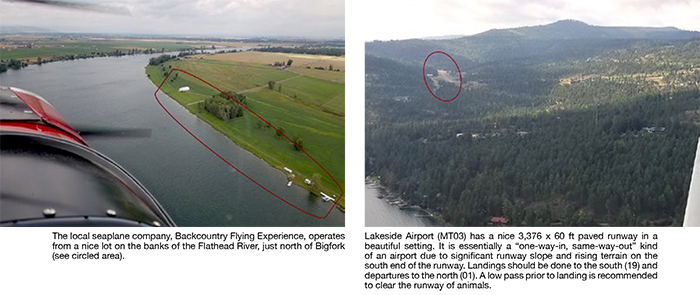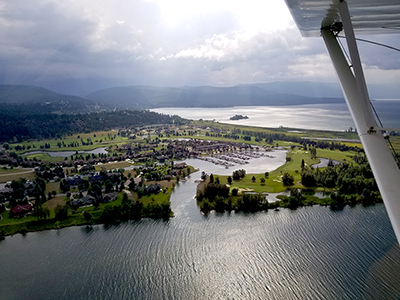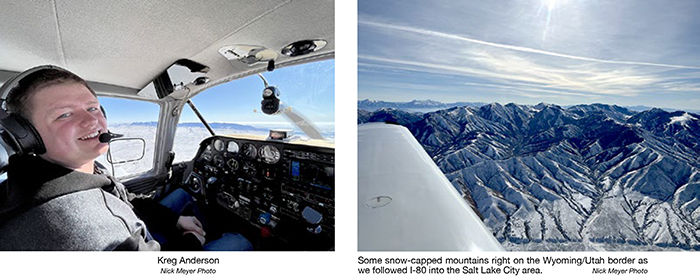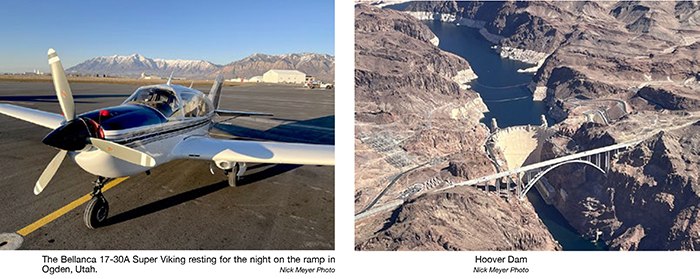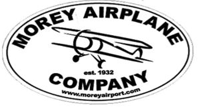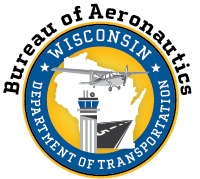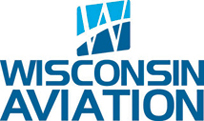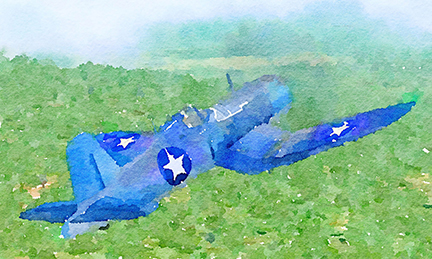
by Dean Zakos
© Dean Zakos 2022 All Rights Reserved
Published in Midwest Flyer Magazine June/July 2022 Digital Issue
I am sitting uncomfortably in my F4U-1 Corsair, “Dee-Light,” canopy back, waiting for the signal to start engines. I am a pilot in VMF 213, the “Hell Hawks.” The heat and humidity on Banika in the Russell Islands are brutal.
It is June 1943.
I am sweating like a horse through my khaki flight suit. Perspiration is stinging my eyes and running down my back, soaking my skivvies. It should be a little cooler when we get into the air. I have on my cloth helmet with earphones, goggles pushed up on my forehead, parachute, Mae West, survival pack, and a brown leather shoulder holster for my .38 revolver. Some of the pilots carry .45 semi-automatics, but the .45 is heavy and bulky. In any event, if either weapon gets wet, it will rust in a couple of days in these conditions. I stopped using leather watch straps; they rotted quickly. I use a stainless-steel band now. I am also wearing leather gloves. They are uncomfortable in the heat, but I have witnessed the burned hands of pilots, so I choose to wear them.
The fighter strip is 4,200 feet long, 150 feet wide, made of crushed coral. Eight Corsairs will fly the mission this morning, two divisions of four each, two flights in each division. I will be on the wing of our skipper, who is lead. I have not flown for a few days. I had a head cold and my sinuses were blocked. Doc grounded me. Before that, I had one “knucklehead” mission (slang for a milk run) last week. The week before, two missions, but no enemy contact. Since arriving in the Solomons in April 1943, we have destroyed more of the Japs’ airplanes than they ours. We also have lost a fair number of planes and pilots to weather and to crackups on takeoffs or landings. The weather has to be good enough to fly and the enemy has to be where we think they will be. Our squadron has seen some action, and I am anxious to do my part, but schedules and luck have a lot to do with who tangles with the enemy. I have a feeling that today will be my day.
Dee-Light is named after Delores (Dee), my girl back home. I didn’t know how serious I was about Dee until I got out here and we started exchanging letters. She writes at least twice a week; as often as my mother. I always knew Dee started where other girls left off with looks and brains, but I have only really come to know her better through our correspondence. I share my hopes and dreams with her, as she does with me. I am in love with her. I think of her often. If and when I return home, I want to marry her.
Our squadron’s Corsairs are hand-me-downs from the Navy. The Navy intended the Corsairs to be the replacements for the older F4F Wildcats on its carriers. However, the Corsairs proved to be difficult to land on carrier decks. High gear struts caused bounced landings, the long nose was difficult to see over, and the cowl flaps, when opened, allowed oil to coat the windshield. We were flying Wildcats until the Navy decided the Corsairs were better suited to shore-based operations. When the Corsairs arrived in February 1943 while we were on Espiritu Santo, our Marine mechanics quickly fixed the problems. They let a little air out of the tires to reduce bouncing. The cowl flaps issue was solved by disconnecting the hydraulic arms and placing duct tape over a couple of cowl flaps that opened directly over the nose. The Corsair is a great ship to fly, very fast and maneuverable; better than anything the Japanese have.
The F4U is a big airplane. It is powered by the Pratt and Whitney 2,000 hp, 18-cylinder, Double-Wasp radial engine, turning a three-blade propeller 13 feet in diameter. Gross weight is 12,400 pounds. Top speed is about 400 mph. Each inverted gull wing contains three M2 Browning .50 caliber machine guns, containing 400 rounds for near and 375 rounds for outer guns. That sounds like a lot of ammunition. In reality, with all six guns firing, it is about 30 seconds worth.
At last, the signal comes to start engines. Throttle full forward. Mixture in idle/cutoff. Prop in low pitch/high RPM. Blower in neutral. Fuel on the reserve tank. Boost pump on and fuel pressure to 17 psi. Prime and then hold the starter in until the engine smooths out. The R2800 whines, coughs, belches smoke, catches. I quickly retard the throttle and move the mixture forward to automatic rich. In a moment, the big radial steadies itself. After a brief warm up and mag check, we taxi into our positions, and I run the takeoff checklist.
I am the second plane into the air. Gear up. Flaps up. Throttle at 44 inches of manifold pressure and prop at 2,550 rpm. I trim for 145 mph, best climb. When all eight Corsairs are off the deck, we form up and head for our destination, about 90 minutes away, northwest of Banika. As we pass over, the green of the jungle and the blue of the water melt into each other at the shoreline’s edge. Our route will be mostly over water. We will use compass headings and strip maps to navigate.
There is a broken ceiling this morning, with flat cloud bases at about 1,200 feet. We are flying underneath. Clouds are forecast to be scattered by the time we are over the target. I find it easy flying under the clouds, as the cloud layer above and the ocean below bracket the nose of the Corsair and present an easy sight picture to monitor. We are hoping to surprise the Japanese this morning. Their airstrip is not a major enemy base, but we should find some aircraft on the ground or in the air. Plan is for the two divisions to come in from different directions. My division will approach from south to north; the other division from east to west. If our timing is good, we will be over the airstrip first, with the second division coming in as we finish our first pass.
I can see the enemy-held island on the horizon now, low above the water, jungle-covered, some higher ground to the southeast. We are level at about 1,000 feet above the water. The Major calls to move into positions for the strafing run. I nudge the throttle back slightly and Dee-Light slides off the skipper’s wing to provide more separation. We will commence our run flying single file in trail. The other division breaks off to our right to move into position to start its approach from the east. My head is on a swivel. Other than our Corsairs, I see no aircraft in the sky. We cover the distance to the airstrip quickly. The skipper starts a shallow climb through the thin clouds. I slide my throttle forward to keep my spacing and follow him. Through large breaks in the layer, I see the clearing in the jungle up ahead, just inland from the white sand beach. That is the airstrip. The skipper starts down. I follow him. The second flight in our division follows us.
The single runway grows larger in my windshield. Gunsight on. My heart is racing; adrenaline pumping through me. All my senses are heightened. This is what I have trained for. I am ready. I don’t think about getting killed or wounded. I think about not screwing up and letting my squadron mates down.
Our attack appears to have taken the Japanese completely by surprise. The airstrip looks quiet and sleepy. No antiaircraft fire. A few Japanese walking or standing in the open. I scan the field looking for targets. The obvious one is a Mitsubishi A6M “Zeke” sitting next to the runway, dull green/gray with faded yellow paint on the wing leading edges. The Japanese have become adept at camouflage and hiding their aircraft. The Zeke is in the open.
The Major has also spotted the Zeke. I can see, as he lines up, that will be his target. When he is in range, he lowers his nose and commences firing. I watch smoke trail from his guns. The shell casings flash in the sunlight as they are ejected and tumble from the bottom of his wings. He expertly directs his fire up to the Zeke, then holds it there for a moment. The Jap fighter visibly shakes under the barrage of the skipper’s six machine guns. Pieces fly off. Sections of the Zeke disintegrate. It is a smoking wreck.
I search frantically for a target. I find one. In the tree line. A Mitsubishi G4M “Betty,” painted in mottled greens and grays. Covered with some palm tree branches, its tail tucked into the dense jungle. I can just make out its lines and twin engines. I push the stick forward and line up Dee-Light’s nose on the Betty. It rapidly fills my gunsight. Now! I intentionally fire in front of the Betty and walk my shells up to it. Dirt and debris kick up 20 or 30 yards in front of the Betty’s nose. Flashes and strikes erupt all over the front of the bomber. I push on the stick and tap right rudder in an attempt to direct my guns down the side of the fuselage. It works. Multiple hits on the left side of the fuselage, near the engine nacelle and wing root. The Betty explodes in flames. I used about 10 seconds of my ammo – a third of what I have.
The Betty is my first victory. Although it was destroyed on the ground, it still counts in our squadron’s total. I am elated, but I don’t want to lose sight of the skipper, who now is over the jungle, banking left, and starting to come around for a second pass. We have been trained to come in low and fast, and to stay low and fast. The Japanese gunners have come to life and, as Dee-Light whistles over the burning Betty, I am suddenly aware that the sky is now filling with orange balls and streaking red tracers coming up at me. Staying low until well over the jungle, I follow the skipper. As I bank to the left and look over my shoulder, I see that the other flight is also having some success, with another column of smoke rising from the tree line adjacent to the runway.
I turn my head from side to side and look over Dee-Light quickly. No damage. Engine instruments, hydraulics, fuel, are all good. We gain some altitude as we turn south, and I can see the second division in the distance, descending out of the scattered clouds from the east. On this pass, the Japanese show us they can put up a fight. Streams of tracers are crisscrossing in front of me in “X” patterns. I do not spot any aircraft that are not already burning. Clouds of smoke are now obscuring parts of the airstrip. I cannot identify any of the antiaircraft gun emplacements. Instead, I quickly choose as my target a ramshackle wooden structure with a windsock mounted on a pole on the roof. By the time I have located it, banked Dee-Light into a shallow turn, and lined up, I have too little time left. I press the trigger on my control stick, but my aim is hurried. I feel the six Brownings vibrate Dee-Light’s wings and airframe. My fire misses the mark. I watch the lines of my tracers uselessly dig up turf.
As I scan the sky to rejoin the skipper – “Thump, thump, . . . thump!” Dee-Light shudders. I’m hit! Right wing good. Left wing – three jagged holes through the top of the wing, each about baseball size. The hits are just inboard of the wingtip, aft of the leading edge. Cautiously, I move the stick from side to side. The holes do not appear to have caused any loss of control. If this is the extent of the damage, I can easily make it back to base.
I locate a Corsair in the distance in front of me. I push the throttle in, make up the distance, and slip into position off the skipper’s wing. He gives me a smile and a thumbs-up. We take up a heading toward home. The other flight and division are catching up and filling in behind us. From what I can see, it looks like one Corsair may be missing.
My best friend Tom, a Second Lieutenant like me, is in the other division. I have not caught sight of him yet. Tom and I met during flight training. We have a lot in common. I attended Marquette University in Milwaukee for three semesters, until the war came. I volunteered in February 1942. Tom, from Chicago, had a few semesters in at Notre Dame, and also volunteered at the same time. I wanted to serve my country and I knew I wanted to fly. After looking things over and talking with my parents, I stood in line in front of the Marine Corps recruiting office because of the Marines’ reputation and, to be honest, Marine dress blues are swell-looking uniforms. No regrets with my choice.
Tom and I attend Mass on Sundays when our duty rosters permit, and often spend free time together. Joe E. Brown, Jack Benny, and Artie Shaw and his orchestra will be part of the USO show coming to the island next week. We’re looking forward to it.
Late one night a few days ago, after sitting in our tent drinking beer (no mission scheduled for the next day), Tom confessed he wanted to get something off his chest. “Don’t mention what I am going to tell you to the other fellows,” he pleaded. I assured him I would not. Tom proceeded to explain that a week ago, while on a combat patrol mission, something had happened.
“I was separated from my flight and heading back to base. I was still over land, flying low. As I came up over a ridge line, there was a shallow valley with a river winding through it.” Tom’s voice lowered. “There were 30 or 40 Japanese soldiers, naked or in skivvies, standing in the water bathing or kneeling on the river’s banks washing their clothes. There was no cover for a couple of hundred yards in any direction. I must have approached them downwind; they never heard me coming. When I appeared over the top of the ridge, they just froze, looking up at me, terrified, mouths open. I had ammunition left in my guns. I placed them in the center of my gunsight.” Tom hesitated for an instant. “I could not bring myself to open up on them. Had I pulled the trigger, I could have torn them to bits.”
Tom continued, “When I left for California to ship out, my mother and father took me to the train station to see me off. On the railway platform, I remember tightly grasping my dad’s hand. He placed his other hand on my shoulder. Our eyes met. My dad is not an emotional man, but I could tell his eyes held tears. He said two things to me. He told me, “Son, come back to us, and make us proud.”
“If I had slaughtered those soldiers in that river, and if I returned home, I don’t think I could ever look my father in the eye again. I will take a man’s life in combat, but not like that.”
“When I landed, I went immediately to Headquarters and reported the estimated number and location of the Japanese soldiers. That’s all I reported,” Tom concluded. He was holding his head in his hands. “Do you think I did the right thing?”
Tom looked up plaintively at me. “What would you have done?” he asked. I knew his question was coming. I took a moment to respond. “Tom, I don’t know if there is a right answer. We’re out here to kill the enemy and win the war. Almost anything we do that advances that purpose is acceptable. I’m not sure if there is a right or wrong answer when our lives are on the line and our country is at risk. On the other hand, you and I have heard the stories about what the Japanese do to civilians and prisoners of war. I like to think we are better than that. What is the point in winning if we are not better than that?”
In the end, I could not hold Tom’s decision against him. Out here, you are constantly required to make fateful choices, quickly and without any time for contemplation, and are often second-guessed later by others who were not there. “Tom, if I was in the same position you were in, I would like to think that I would have done exactly what you did.” My answer seemed to satisfy him. We left it at that.
When I landed Dee-Light back on Banika, I started making inquiries about Tom as soon as I could get down off the wing. One of the pilots from the other division said he saw Tom’s plane get hit by antiaircraft fire. Some pilots heard Tom make a terse radio call, “. . . losing oil pressure,” and his Corsair was observed heading out to sea, low over the water, trailing heavy black smoke.
Tonight, I said a rosary for Tom’s safe return. I prayed he survived bailing out or ditching. I hope he can be found.
With Tom gone, there are only 11 original members of our squadron left.
EDITOR’S NOTE: Dean Zakos (Private Pilot ASEL, Instrument) of Madison, Wisconsin, is the author of “Laughing with the Wind, Practical Advice and Personal Stories from a General Aviation Pilot.” Mr. Zakos has also written numerous short stories and flying articles for Midwest Flyer Magazine and other aviation publications.
DISCLAIMER: This article involves creative writing, and therefore the information presented may contain fictional information, and should not be used for flight, or misconstrued as instructional material. Readers are urged to consult with their flight instructor about anything discussed herein.
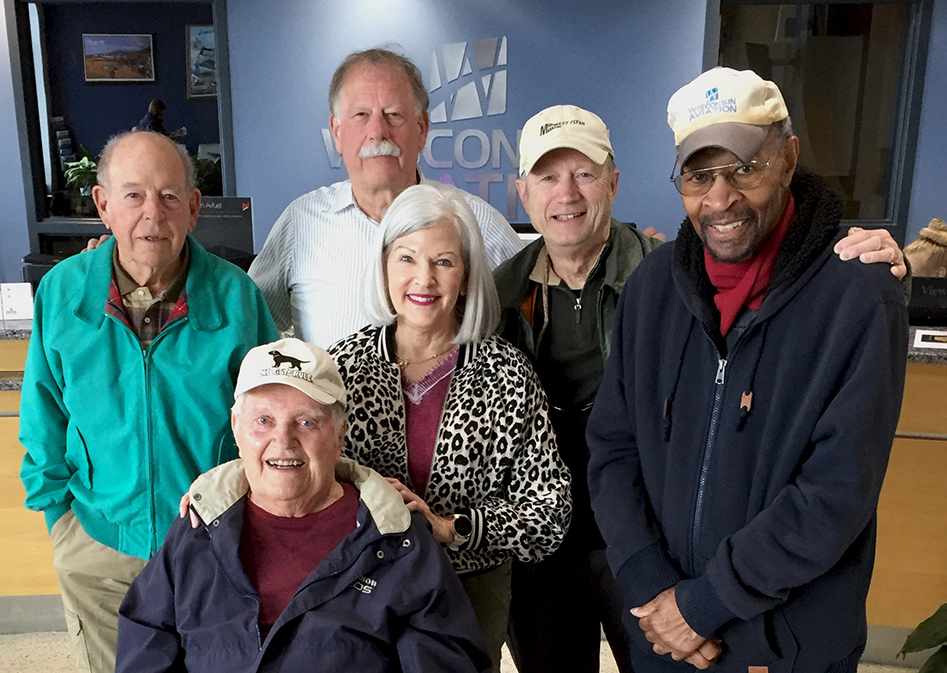








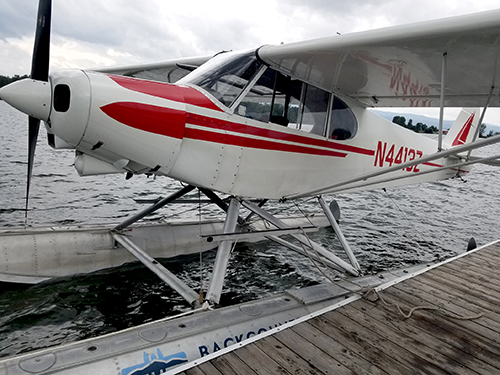
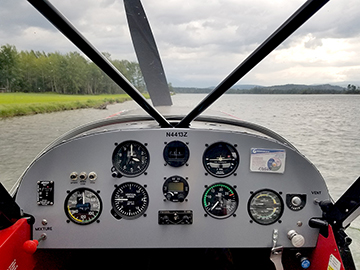 We took the school’s Piper Super Cub PA-18 on the joy ride, but normally she’s quite the workhorse. She spends all summers training pilots.
We took the school’s Piper Super Cub PA-18 on the joy ride, but normally she’s quite the workhorse. She spends all summers training pilots.